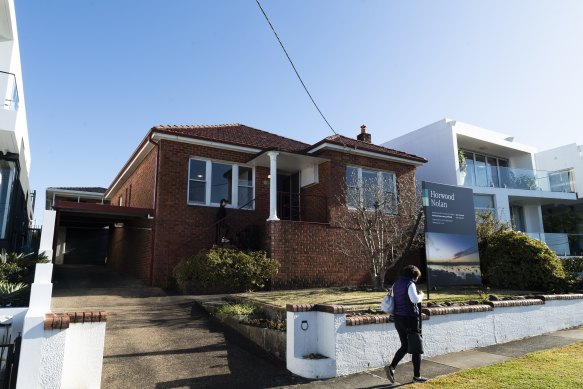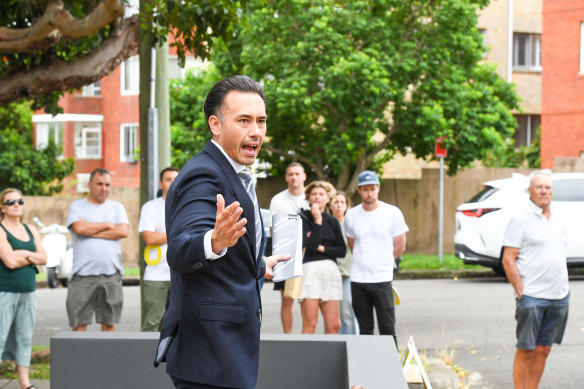The type of home that’s more than twice as profitable as its neighbour
House sellers are making more than twice the profits of unit sellers after a blowout in prices for houses compared to higher-density homes.
Home owners who sold their properties in the March quarter made a median paper profit of $388,500 if they sold a house across the capital cities, compared to $165,000 for vendors who sold a unit, CoreLogic figures show.

Detached house vendors made larger profits than unit vendors.Credit: Rhett Wyman
The gap was widest in Sydney ($600,000 for house sellers, $200,000 for units), while there were significant gaps in Melbourne ($405,000 for houses, $145,750 for units), the ACT ($435,000 for houses, $159,000 for units), Brisbane ($400,000 for houses, $171,000 for units) and Perth ($260,000 for houses, $105,000 for units).
Houses were more likely to make a profit. Across Australia 97.1 per cent of house resales made a profit in the March quarter, compared to 89 per cent of units.
CoreLogic head of Australian research Eliza Owen said house prices have risen faster than apartment prices, up 84.9 per cent and 41.1 per cent respectively over the 10 years to May.
Houses have a larger land component and the opportunity for development so attract a premium, while unit stock is less scarce after an investor-fuelled development boom in the 2010s, which slowed the capital gains on offer from units.
House values also shot up once the pandemic hit as households sought more living space, she said. Owner-occupier buyers moved to outer suburban and regional markets where a lot of the homes are detached houses rather than units, while investors sat out while international borders were closed.
Owen warned that the higher profits for houses highlight the “haves” and “have nots” of the housing market – a gap not only between home owners and renters but also between those who manage to buy a detached house and those constrained to a unit.
“We know wealth begets wealth from property ownership, but wealth also begets wealth from the level or price point you can access because historically the higher end of the market has delivered higher returns over time,” she said.
“That’s evident from house and unit values … It’s another grade of inequality within the home ownership story and it’s something to think about as we shift the future of our cities.”
She backed government plans to encourage more development in transport-heavy areas.
“Which is great, and it does mean a greater number of Australians have access to owning a home, but the result of that will probably be massive windfall gains for some house sellers, versus entering a market that delivers relatively small capital gains,” she said.
“One of the trade-offs of trying to create more affordable housing stock is you’re also creating less profitable housing stock.”
PRD Real Estate chief economist Dr Diaswati Mardiasmo agreed that the amount of new detached houses being built was minimal compared to new unit supply. Plus, there were few established houses for sale compared to the amount of potential buyers, but many units being sold.

Unit sellers made more modest profits than house sellers.Credit: Peter Rae
“Trying to find a house is almost impossible,” she said. “The makeup of the Australian demographic is still mostly families – and they’re looking for houses in the suburbs.”
Mardiasmo said some small families might opt for a three-bedroom unit, but most unit stock on offer has two bedrooms which may not suit a family, especially if they want a pet or backyard.
“The outlook is kind of grim, I’m not going to lie,” she said.
“There’s a lot of talk about us moving to unit living, but when it comes to Australian families it’s more of, unless they need to, it’s not a preference yet. The houses are still the preference.”
Buyer’s advocate Jarrod McCabe distinguished between high-rise apartment towers where individual homes may have very low land components, and older-style boutique blocks.
“If [a buyer] can get a renovated, nice apartment in a good quality location we’re seeing there is a bit more interest in that in the last six to 12 months,” the Wakelin Property Advisory director said, especially from first home buyers rather than investors.
For unit buyers looking to build equity, McCabe recommended higher value areas and homes with a stronger land component, such as a small block in a quiet street with good access to public transport and shops.
Natural light, a nice aspect, a better position in the block, a courtyard and an active owners’ corporation were drawcards, while doing a sensible renovation could also help improve returns, he said.
“[Older-style units] haven’t set the world on fire. They would have greater growth,” he said.